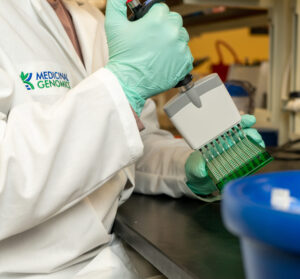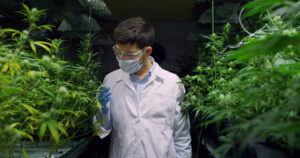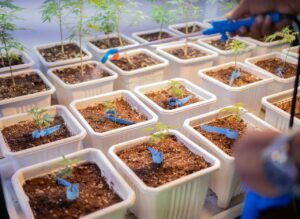Yes. Although Trichoderma presents no risk to cannabis consumers or patients, it is a fungus, and it will contribute to a Total Yeast and Mold count.
Editor’s Note: It has been brought to our attention that there have been documented cases of fatal Trichoderma infections, but they are very rare and were acquired through organ transplant or dialysis. Here are links for your reference (1, 2, 3, 4)
To better understand this problem, let’s explore why Trichoderma is used in cannabis cultivation and how it interacts with the plant.
What is Trichoderma?
Trichoderma is a fungi genus that many organic cannabis growers use for disease control and increases in yield. Trichoderma species produce a mixture of antifungal enzymes, including chitinases and β-1,3 glucanases, which work synergistically to break down the cell walls of other fungi, making them an effective all-natural fungi killer. The microscopic image below shows the Trichoderma asperellum fungus attacking a Phytophthora ramorum spore.
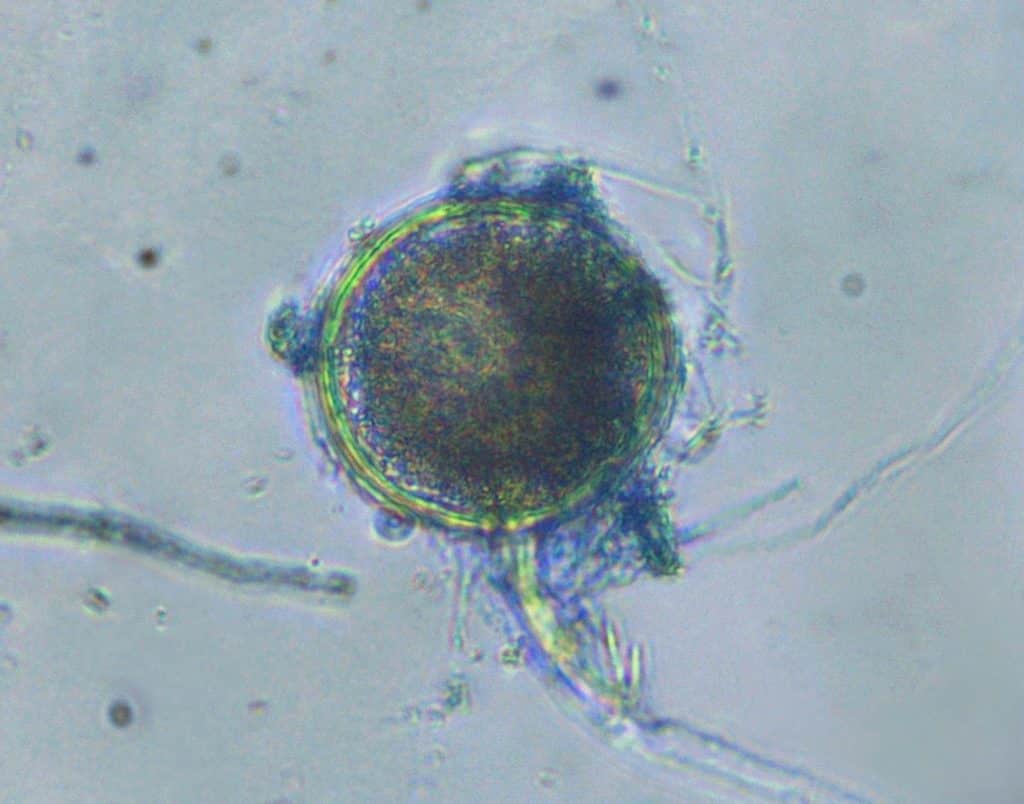
Microscopic image of the fungus Trichoderma asperellum attacking a Phytophthora ramorum spore. The fungus is showing promise as a biological control agent of this pathogen, which causes Sudden Oak Death. Fort Detrick MD, d3827-1
Additionally, many growers see increased plant growth and nutrient uptake when using Trichoderma.
Trichoderma species are usually considered soil organisms that colonize the plant’s root system. In fact, many of the most powerful root treatments available include Trichoderma species, such as Bio Works RootShield® and Roots Organics Oregonism XL.
However, studies have demonstrated that Trichoderma species are capable of colonizing the above-ground tissues of plants. One study found Trichoderma in the stem tissue and leaves of Theobroma cacao (cacao). Further analysis showed certain strains of Trichoderma showed a preference for surface colonization of glandular trichomes where they formed swellings on the trichome tips.
Strains of four Trichoderma species were able to enter glandular trichomes during the colonization of cacao stems where they survived surface sterilization and could be re-isolated. The penetration of cacao trichomes may provide the entry point for Trichoderma species into the cacao stem allowing systemic colonization of this tissue.
What does this mean for Cannabis growers?
Because Trichoderma is traditionally believed to be a soil organism, growers likely assumed it was unlikely to show up on a test of the cannabis flower. However, studies showing Trichoderma can colonize plant trichomes certainly challenges that assumption.
Furthermore, a peer-reviewed study Medicinal Genomics authored found Trichoderma present on a cannabis sample. That study also showed that the relative amount of Trichoderma present on the sample after culturing was more than 10 times what was found on the original. This rapid growth in culture media could cause a failure result that is not representative of the microbial load on the original sample.
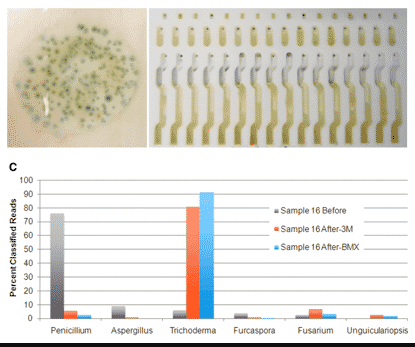
This means that cannabis growers who use Trichoderma could potentially fail a Total Yeast and Mold test for a harmless beneficial microbe. This underscores the notion that Total Yeast and Mold tests are poor indicators of safety. A low TYM result does not mean a cannabis sample is free of pathogens, and a high TYM result doesn’t necessarily mean a sample is harmful to consumers.
Consequently, failures for beneficial microbes may cause cannabis cultivators to use harmful chemical pesticides instead of natural alternatives, which present a much greater threat to consumers and patients.
Does PathoSEEK Total Yeast and Mold Count Trichoderma?
Yes. Although we can design a qPCR test that would exclude Trichoderma from a Total Yeast and Mold count, many state regulators require our tests include the same species enumerated in culture-based methods. In this case, the method is not the issue. The problem is the test.
Thankfully, states are beginning to adopt species-specific regulations that target only pathogenic microbes. In those states, growers have the microbial freedom to use beneficial microbes and can yield 20-30% more than those growing in semi-sterile environments.
Find out if Trichoderma Caused Your Failure
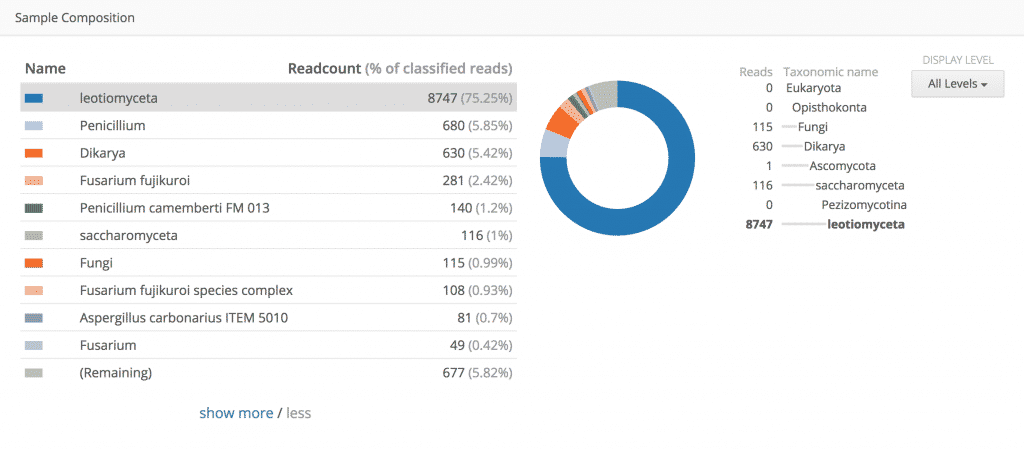 Our PathoSEEK® ID Service can uncover whether beneficial microbes are triggering failures. PathoSEEK ID identifies which microbial species triggered a Total Yeast and Mold failure and provides an interactive report that shows the percentage breakdown of microbes in the sample.
Our PathoSEEK® ID Service can uncover whether beneficial microbes are triggering failures. PathoSEEK ID identifies which microbial species triggered a Total Yeast and Mold failure and provides an interactive report that shows the percentage breakdown of microbes in the sample.
This valuable information can help you identify the microbes that are responsible for their failure, so you can take steps to prevent future failures.




